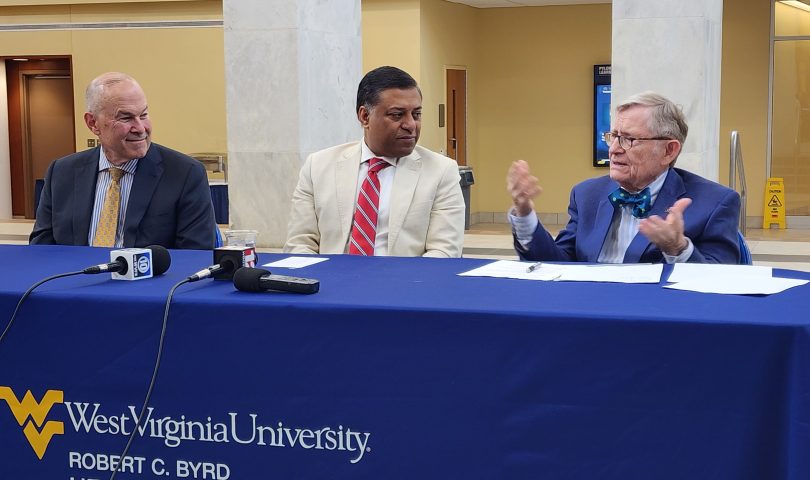MORGANTOWN – Dr. Rahul Gupta, director of the White House Office of National Drug Control Policy, joined with Dr. Clay Marsh, chancellor and executive dean for WVU Health Sciences, and WVU President Gordon Gee to field some questions about addiction issues from West Virginia reporters during Gupta’s visit to WVU on Thursday.
Treatment programs
This question focused on the issue of treatment program lengths of stay: 28-day programs are frequently ineffective but it’s harder to get into long-term care.
Gupta said the treatment side of the addiction equation is improving. But, “the challenge here is connection, community, family.” Some will need in-patient care for longer periods and the Biden administration is looking at that.
“It’s not only just more treatment, it’s about finding that community, the resources and the support systems around them.” That includes housing, transportation, child care and jobs, he said.
His office is putting out a proposal for people exiting prisons or jail to be able to apply for Medicaid 90 days before discharge, so they will be able to take care of their health issues and have plans of care.
Border crisis
The question focused on fentanyl and other drugs crossing the southern border and means to stop the traffic.
Gupta said we know the precursor chemicals come from China to Mexico, and the drugs then get transported into the U.S. The majority of the drugs come through ports of entry, in commercial and personal vehicle traffic.
The administration, he said, is pursuing adopting non-intrusive detection technology – scanners when appropriate – to spot the drugs at the border. They are working to adopt this technology at 123 ports of entry.
Immediate solutions
Many of the approaches and solutions dicussed during the roundtable preceding the press conference will require time: fostering connection and community, reeducating lawyers and doctors and the populace in general. We asked what immediate solutions can bridge the gap.
Gupta said naloxone is an immediate antidote for opioid overdoses. “we know that when naloxone is surged in communities, lives are saved.” Looking at last year’s overdose deaths, tens of thousands of lives could have been saved with naloxone.
And in youth overdoses, in two out of three cases bystanders were nearby but didn’t have naloxone.
“You have to save the life first.” Making naloxone more readily accessible and affordable is one of his office’s priorities. Through his office’s work, people will see it on pharmacy shelves this summer, next to Motrin and Tylenol.
More needs to be done to make available test strips for fentanyl and xylazine, he said, so users can test their drugs to make sure there’s nothing in them that might kill them.
Other short-term solutions, he said, are making sure treatment options are available – and they’ve been removing barriers to set up facilities and increase telehealth.
Marsh said locally WVU has moved forward in several ways. They’ve focused on harm reduction through the school of public health, and on training first responders. The WVU Student Government Association has a Mountaineer Fentanyl Education Task Force.
There’s been improved access to treatment programs, he said, with wait times shrinking from six months to same-day. WVU is also providing addiction medicine and psychiatry programs, and has a program to spread knowledge from specialists to generalists.
Gee picked up on the student theme, noting that “students are more influential on each other than a 79-year-old university president.” They’ve taken the responsibility of educating their peers on themselves, inside and outside WVU.
And research shows that Gen Z, he said, is taking the problem seriously. “There is a way for us to get at it through public conversations.”
Tweet David Beard @dbeardtdp Email dbeard@dominionpost.com




